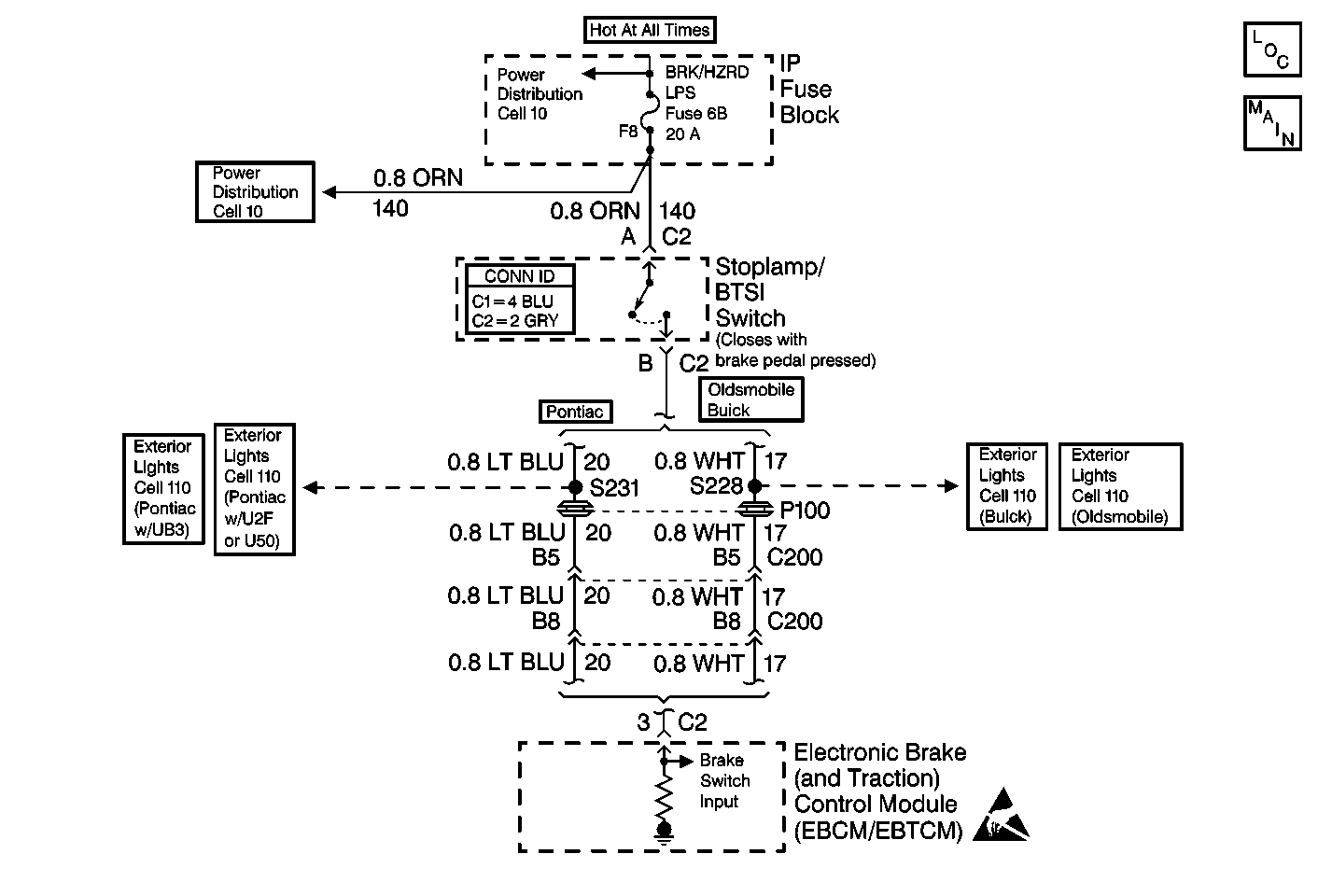
Circuit Description
This DTC occurs when the internal self-checking safety logic has determined that the stoplamp/BTSI switch is continuously on. This is important because the TCS cannot be activated when the stoplamp/BTSI switch is on.
Conditions for Setting the DTC
A DTC C1294 can be set if the vehicle speed reaches at least 40 km/h (25 mph). A malfunction exists if the brake was never off during two consecutive drive cycles.
Action Taken When the DTC Sets
| • | A DTC C1294 is stored |
| • | The TCS is disabled |
| • | The TRACTION OFF indicator is turned on |
| • | The ABS remains functional |
Conditions for Clearing the DTC
| • | The condition for the DTC is no longer present and the scan tool clear DTC function is used |
| • | 50 ignition cycles have passed with no DTCs detected |
Diagnostic Aids
| • | Thoroughly inspect the wiring and the connectors. Failure to carefully and fully inspect the wiring and the connectors can result in misdiagnosis. Misdiagnosis may cause replacement of parts without repairing the malfunction. |
| • | The following conditions may cause most intermittent malfunctions: |
| - | Poor connections |
| - | Rubbed through wire insulation |
| - | A broken wire inside the insulation |
| • | The following conditions are other possible causes of this malfunction: |
| - | A short to voltage in the stoplamp/BTSI switch circuit |
| - | A misadjusted or shorted stoplamp/BTSI switch |
| • | If an intermittent malfunction exists, refer to Intermittents and Poor Connections Diagnosis in Wiring Systems. |
Test Description
The numbers below refer to the step numbers on the diagnostic table.
Step | Action | Value(s) | Yes | No |
|---|---|---|---|---|
1 | Was the Diagnostic System Check performed? | -- | Go to Diagnostic System Check | |
2 | Observe the rear brake lamps. Are the rear brake lamps off? | -- | ||
3 | Disconnect the stoplamp/BTSI switch connector. Are the brake lamps on? | -- | ||
Is the voltage greater than the specified value? | 1.0 V | |||
5 |
Was DTC C1294 set in the last three drive cycles? | -- | Go to Diagnostic System Check | |
6 | Repair the short to voltage in CKT 17. Refer to Wiring Repairs in Wiring Systems. Is the circuit repair complete? | -- | Go to Diagnostic System Check | -- |
7 | Adjust or replace the stoplamp/BTSI switch as necessary. Refer to Stop Lamp Switch Adjustment or Stop Lamp Switch Replacement in Hydraulic Brakes. Is the repair complete? | -- | Go to Diagnostic System Check | -- |
8 | Replace the EBTCM. Refer to Electronic Brake Control Module Replacement . Is the replacement complete? | -- | Go to Diagnostic System Check | - |
